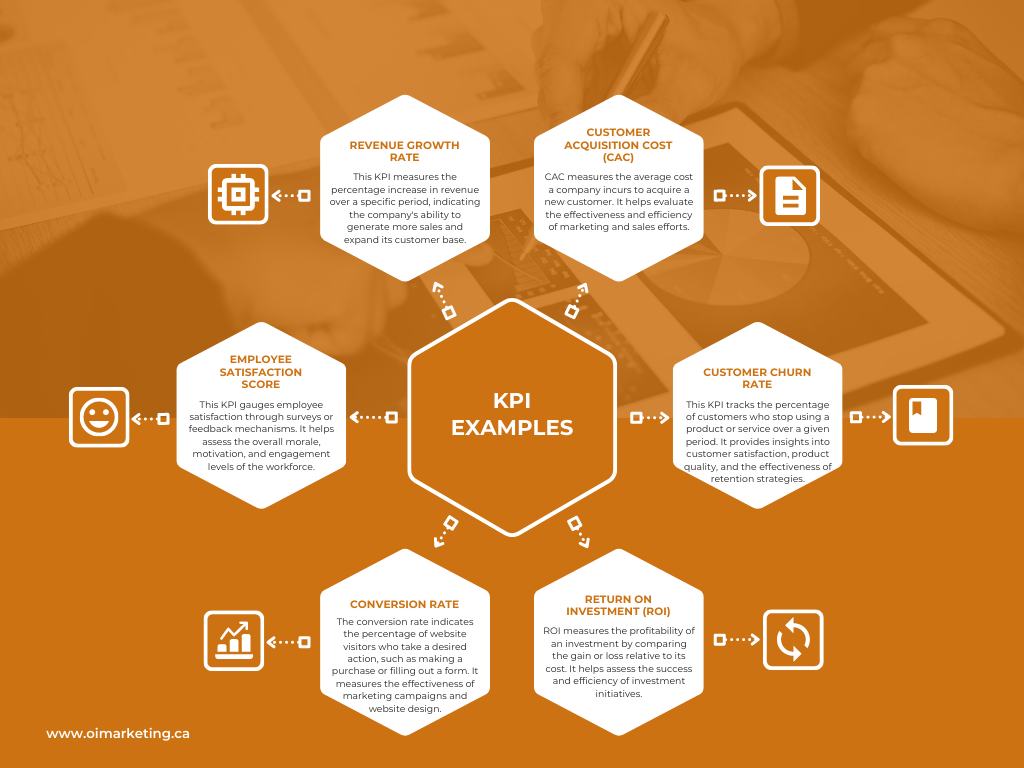What KPIs Stand for in Marketing
You might think that ‘KPI’ is just another marketing buzzword being thrown around, but there’s more to it than meets the eye. Key Performance Indicators (KPIs) are essential tools for businesses looking to level up their marketing game and stay ahead of the curve in an increasingly competitive landscape. We’re here to provide you with a comprehensive overview of what KPI stands for in marketing, how they can drive success, and why every innovative marketer should be using them.
Don’t worry if you’re new to the world of KPIs; we’ve got your back. In this article, we’ll dive into understanding different types of KPIs and their examples while guiding you on selecting the most relevant metrics for your business.
Furthermore, we’ll discuss effective ways to use these indicators and explore some powerful KPI software options that can make tracking your progress a breeze.
So buckle up as we embark on an insightful journey towards unlocking the full potential of KPIs and taking your marketing strategy to new heights!
Understanding Key Performance Indicators
Imagine diving into the marketing world and uncovering the secrets behind Key Performance Indicators, giving you powerful insights that’ll help drive your business to new heights. Key Performance Indicators (KPIs) are quantifiable performance metrics used to evaluate and measure progress toward specific objectives within a company. A solid understanding of KPIs is essential for any marketer, as they provide valuable data points that can help inform decision-making processes and optimize marketing strategies. Let’s explore why marketing KPIs are so crucial for businesses. By regularly monitoring these performance metrics, we can quickly identify areas where our efforts may fall short or exceed expectations. This enables us to be more agile in our approach, making necessary adjustments or investing further in successful tactics.
Additionally, KPIs allow us to set achievable goals and benchmarks for our marketing initiatives, ensuring we stay on track with our overall business objectives.
So, what does all this mean for you? Simply put, identifying and tracking the right KPIs can significantly improve your marketing campaigns, ultimately resulting in increased revenue and growth for your business.
Don’t underestimate the power of these crucial metrics – instead, embrace them as integral tools in your quest for innovation and success!
Let’s explore why marketing KPIs are so crucial for businesses. By regularly monitoring these performance metrics, we can quickly identify areas where our efforts may fall short or exceed expectations. This enables us to be more agile in our approach, making necessary adjustments or investing further in successful tactics.
Additionally, KPIs allow us to set achievable goals and benchmarks for our marketing initiatives, ensuring we stay on track with our overall business objectives.
So, what does all this mean for you? Simply put, identifying and tracking the right KPIs can significantly improve your marketing campaigns, ultimately resulting in increased revenue and growth for your business.
Don’t underestimate the power of these crucial metrics – instead, embrace them as integral tools in your quest for innovation and success!
Types and Examples
Diving into the diverse world of performance metrics, you’ll encounter various types and examples that can significantly boost your marketing strategy. Understanding the different types of KPIs and selecting those that align best with your objectives will ensure that your marketing team remains focused on what truly matters. By tracking these indicators, you can make data-driven decisions, allocate resources efficiently, and optimize your marketing channels for better results. Some joint marketing KPI examples are: It’s essential to choose KPIs relevant to your specific goals. For instance, if you aim to improve brand awareness, focusing on social media followers or mentions might be more fitting than targeting conversion rate optimization. Ensure you periodically review and adjust these selected KPIs as your business evolves or when market conditions change.
As marketers desiring innovation, we must always strive to identify new KPIs that provide actionable insights into our campaigns’ effectiveness. This continuous process helps us uncover hidden opportunities and achieve our short-term targets while keeping an eye on long-term growth.
So go ahead – dive deep into performance metrics and select the right mix of marketing KPI examples tailored for your unique strategy. Your business will indeed thank you for it!
It’s essential to choose KPIs relevant to your specific goals. For instance, if you aim to improve brand awareness, focusing on social media followers or mentions might be more fitting than targeting conversion rate optimization. Ensure you periodically review and adjust these selected KPIs as your business evolves or when market conditions change.
As marketers desiring innovation, we must always strive to identify new KPIs that provide actionable insights into our campaigns’ effectiveness. This continuous process helps us uncover hidden opportunities and achieve our short-term targets while keeping an eye on long-term growth.
So go ahead – dive deep into performance metrics and select the right mix of marketing KPI examples tailored for your unique strategy. Your business will indeed thank you for it!
Metrics and Measurement
Measuring and analyzing metrics is crucial, as it’ll help you uncover valuable insights and make informed decisions for your marketing campaigns. Metrics and measurement go hand in hand with marketing KPIs to evaluate the effectiveness of your campaign strategies. By tracking progress through quantifiable measures, you can identify what works well and where improvements can be made. To get the most out of your marketing investment, it’s essential to establish clear objectives from the onset. This will allow you to determine which metrics are relevant for evaluating success. As marketers who strive for innovation in our field, we must continually refine our methods for gathering data and assessing results. Embracing new tools and techniques that provide deeper insights into consumer behaviour can help us better understand how our campaigns resonate with audiences. By leveraging these findings to optimize our marketing efforts further, we’re better positioned to achieve significant growth in brand awareness and drive long-term business success.
Efficient Utilization of KPIs
Harnessing the power of KPIs effectively can be like finding a compass in the vast wilderness of marketing, guiding you toward success and growth in your campaigns. We feel to make the most of this powerful tool, selecting relevant KPI metrics that align with your marketing goals and objectives is essential. By analyzing a range of KPI examples, you’ll quickly learn how different industries measure performance and what benchmarks are crucial for their success. As we strive for innovation and improved marketing strategies, understanding the key components influencing our return on marketing investment is vital. It’s essential to track these KPIs and analyze them regularly to identify trends, monitor progress, and adjust tactics if necessary. Remember that effective use of KPIs involves selecting appropriate metrics and setting realistic targets based on historical data or industry benchmarks. Creating an agile approach to our marketing efforts will ensure we stay ahead of the curve while maximizing returns on investment. Continuously reviewing our chosen KPIs will allow us to refine our strategies and maintain momentum in driving results forward. So let’s embark on this journey together, using informed decisions backed by factual data as our navigation tools through the ever-changing landscape of modern marketing.Implementing KPI Software
Now let’s explore how implementing KPI software can elevate your marketing strategy, empowering you to easily track and analyze crucial metrics. To truly harness the power of data-driven decision-making, it’s essential to have a robust system in place that allows for real-time monitoring and analysis of your marketing efforts. With the right KPI software, you can measure KPIs seamlessly, track progress toward goals, and make informed decisions based on accurate data. This can provide an invaluable resource for understanding what KPI mean in terms of marketing cost efficiency, the effectiveness of campaigns, customer engagement levels and more. In our opinion, no longer will you need to rely on gut instinct or outdated reports when making strategic decisions (I mean, that is the dream, right?). Instead, implementing KPI software can offer several benefits, such as:- Streamline data collection: Collecting data from various sources becomes much simpler when using a centralized platform.
- Customizable dashboards: Tailor your dashboard views to focus on the most relevant KPIs for your business.
- Real-time updates: Stay up-to-date with your campaigns’ performance and quickly identify areas that require attention.
- Data visualization tools: Understand complex information at a glance through visually appealing charts and graphs.
- Integration capabilities: Connect seamlessly with other marketing tools like Google Analytics, social media platforms, or CRM systems.

